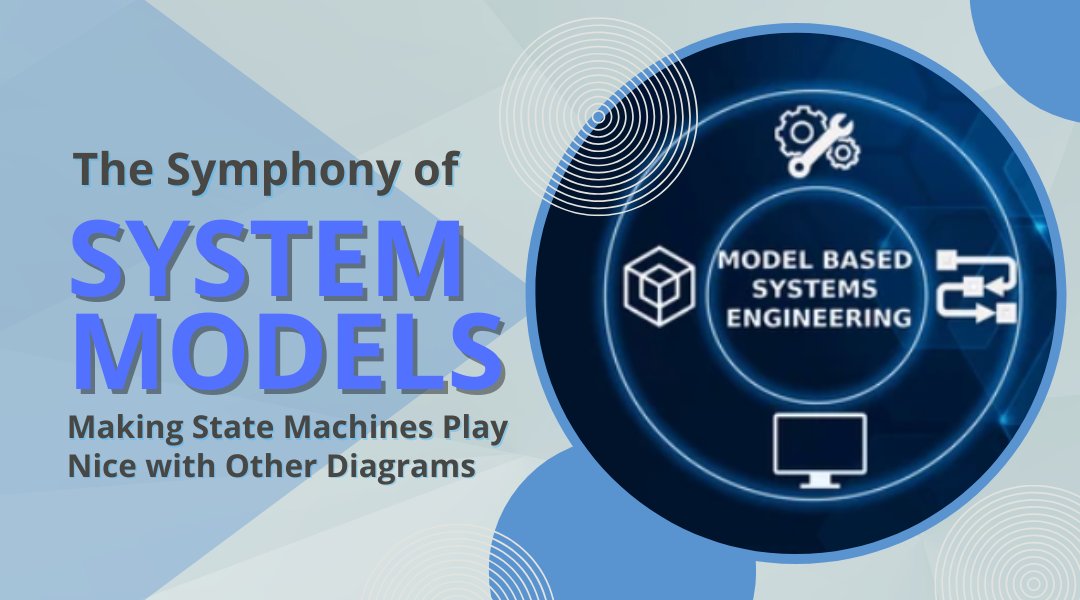Imagine conducting an orchestra where the string section doesn’t know what the brass players are doing. That’s what happens when state machines exist in isolation from other system models. Let me show you how to make these diagrams work in harmony.
The Conductor’s Score: Why Synchronization Matters
Last year, we redesigned a hospital elevator control system where:
- The state machine showed perfect door operation logic
- The sequence diagram beautifully mapped message flows
- The block diagram accurately reflected physical components
Yet the system failed spectacularly because these models weren’t talking to each other. Here’s how we fixed it.
1. Aligning with Use Cases: The Script vs. The Performance
Use cases are like a play’s script – they tell you what should happen. State machines are the actual performance.
Real-world sync example:
For a smart locker system:
- Use Case: “User retrieves package”
- State Machine States:
AwaitingPIN → Verifying → Unlocking → MonitoringOpen → Relocking
Pro tip: Add a “stage direction” note in your use case diagram:
“Transition from Verifying to Unlocking only occurs after successful PIN validation”
2. Dancing with Activity Diagrams: Choreographing the Steps
Activity diagrams show the dance moves. State machines show when to perform them.
Coffee machine synchronization:
Activity Diagram: State Machine:
[Grind beans] → Grinding state
[Heat water] → Heating state
[Infuse coffee] → Brewing state
Watch for mismatches: We once found an activity for “Descale” that had no corresponding state – a maintenance nightmare waiting to happen.
3. Sequence Diagrams: The Call-and-Response of System Communication
Think of this like matching text messages with relationship status changes.
Smart thermostat example:
Sequence Diagram: State Machine:
Phone → “Set to 72°” Idle → Heating
Thermostat → “Acknowledged” Heating (entry action: start fan)
Sync trick: Use the same color coding for messages and transitions to visualize timing alignment.
4. Structural Diagrams: The Stage and the Actors
Block diagrams are your theater’s blueprint. State machines show how the actors move on stage.
Electric vehicle charging sync:
Block Diagram Component: State Machine Behavior:
Charge Port → [PluggedIn] → [Handshaking]
Battery Management → [Charging] → [BalancingCells]
Critical check: Every port in your block diagram should have corresponding receive/send events in the state machine.
The Synchronization Playbook
1. The Tracing Game
Take any transition in your state machine. Can you point to:
- The use case it supports?
- The activity it enables?
- The message it sends/receives?
- The component that executes it?
2. The Consistency Check
Build a matrix with:
- Rows: States and transitions
- Columns: Other diagram elements
- Mark intersections where they should align
3. The Timeline Test
For time-sensitive systems, plot state durations against sequence diagram timelines
When Synchronization Fails: War Stories
- The Elevator That Wouldn’t Stop
State machine allowed door opening while moving because the sequence diagram’s safety check wasn’t reflected - The Smart Lock That Locked Out Owners
Use case showed emergency override, but state machine had no corresponding transition - The Industrial Printer That Ate Its Parts
Activity diagram showed parallel operations that the state machine couldn’t handle
Tools That Help
Modern modeling tools can help maintain sync through:
- Cross-diagram hyperlinks
- Automatic consistency checking
- Impact analysis when changes occur
But nothing beats old-fashioned diagram walks with your team.
Your Turn to Conduct
Try this exercise with a vending machine:
- Sketch a simple state machine
- Create a matching use case for “Purchase drink”
- Map the states to components in a block diagram
- Show the message flow in a sequence diagram
When all these views align, you’ve achieved true system modeling harmony – where every diagram tells part of the same story, just from different perspectives. That’s when you know your design will perform like a well-rehearsed orchestra.
